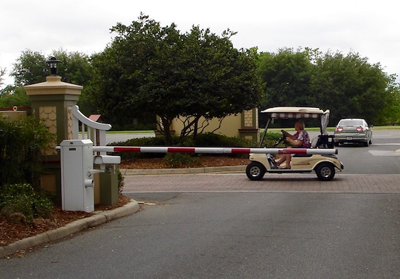The Gated Community as a Testing Ground for Smart Urban Mobility
Whether you think climate change is an issue of highest importance or simply bogus science, the fact is that political and social policies are being mobilized and set forth on the supposition that can and must be done about it. Two of the critical issues that are a subset of climate change is the growing urbanization of societies around the world with the attendant problems of congestion and pollution.
In the effort to find solutions, it is likely that the gated community will play a significant role as a testing ground for a wide range of efforts, including autonomous (self-driving) vehicles, ride-sharing via shuttles, on-demand car-sharing, reducing the need to actually owning your vehicle.
So, what are the urbanization trends around the world, what new products will emerge out these new trends, and how could the big picture be effectively addressed via the universe of mobility found in the gated community lifestyle?
Global urbanization
Most of the focus is, for good reason, on large and rapidly growing cities. It is well-documented that urban centers in Africa and Asia are experiencing very rapid growth. Cities in Asia such as Dhaka in Bangladesh, Shanghai in China, and Mumbai and Delhi in India have not only, at this point, high levels of population density, but acute levels of air pollution.
The United Nations Commission on Trade and Development’s (UNCTAD’s) 2017 Handbook states that looking forward to 2050, the (projected) increase in urbanization to 68 per cent of the world’s population “…equates to an additional 2.4 billion people living in urban centers – an increase of 193,000 persons per day for the next 33 years.”
In Africa, urbanization is occurring at a faster pace than any other geographic location in the world. The Center for Strategic International Studies, citing World Bank figures states that, “In 2015, SSA (South Sahara Africa) included thousands of urban centers, of which two mega-cities had over 10 million inhabitants; three cities had between 5 and 10 million; and another 41 cities had populations between 1 and 5 million.
While far less intense, the urbanization trend is also occurring in the United States and Europe. It is also true that the U.S. and Europe with far wealthier populations are better equipped, than the developing economies of Asia and Africa, to deal with issues of congestion and pollution.
Transport systems a key target
In any event, aside from the diverse issues of urban locations around the world and the differences in abilities to cope with these issues, the principal target for alleviating congestion and pollution are transport systems. Transport systems, broadly speaking, involve privately-owned motor vehicles, small commercial conveyance of a wide variety, and mass transit systems.
- Most companies and individuals involved in urban planning are looking to the following changes:
- Congestion fees assessed on vehicles traveling in certain urban districts;
- Outright prohibition of internal combustion engines—all vehicles operating on electric power;
- Drastically reducing the need for private, individual ownership of cars, via on-call ride sharing;
- Optimization of traffic flows, in part through the operation of small, driverless vehicles;
- Heavier reliance on mass transit systems.
The role of gated communities
Gated community development itself is a deterrent to urbanization, particularly as gated communities become increasingly self-contained, with everyday shopping needs, schools, and entertainment accessible within them. Personal transportation vehicles (PTVs) are a preferred mode of transportation to begin with, and so, fit the dimensions of a small, urban mobility vehicle. The gated community environment is ideal for accessorizing PTVs with artificial intelligence devices, including self-driving systems. My view, by the way, is that PTVs such as the Club Car Onward, STAR’s Sirius, E-Z-GO’s 2Five, Yamaha’s Drive2 are just the beginning of new designs, features and performance emanating from the product development shops of these companies.
It should be noted that fully autonomous vehicles, because they have no need for human intervention, other than signaling a pick-up point and a destination, there is no need for a steering wheel, the brake and gas pedals, and other control apparatus that typifies a conventional automobile and the PTV. Thus, the interior space of the vehicle can be totally redesign.
Some have termed these new interior designs as “moveable living rooms”—or, mobile office space.
Sources of innovation likely to be start-ups
Investment driverless vehicle systems companies has been breathtaking, as investors seize up the concept of the new product and have bet heavily on its future value. With this hectic funding activity directed to largely untested systems (in real world environments), do not be surprised if you, as gated community resident, are invited to participate in a testing project.
More on this subject in future articles.
Contact the Author: Steve Metzger at smetzger@smallvehicleresource.com. Or check out our website at www.smallvehicleresource.com, where you will find an extensive database of vehicle models and can make side-by-side comparisons of vehicles based on a full set of specifications.


